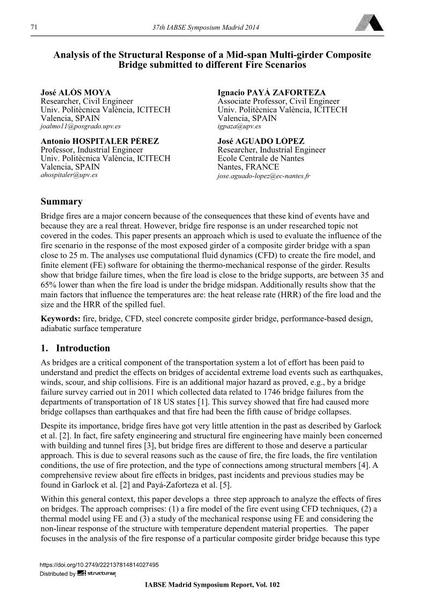Analysis of the Structural Response of a Mid-span Multi-girder Composite Bridge submitted to different Fire Scenarios

|
|
|||||||||||
Détails bibliographiques
| Auteur(s): |
José Alós Moya
Ignacio Payá Zaforteza Antonio Hospitaler Pérez José Aguado López |
||||
|---|---|---|---|---|---|
| Médium: | papier de conférence | ||||
| Langue(s): | anglais | ||||
| Conférence: | IABSE Symposium: Engineering for Progress, Nature and People, Madrid, Spain, 3-5 September 2014 | ||||
| Publié dans: | IABSE Symposium Madrid 2014 | ||||
|
|||||
| Page(s): | 71-78 | ||||
| Nombre total de pages (du PDF): | 8 | ||||
| Année: | 2014 | ||||
| DOI: | 10.2749/222137814814027495 | ||||
| Abstrait: |
Bridge fires are a major concern because of the consequences that these kind of events have and because they are a real threat. However, bridge fire response is an under researched topic not covered in the codes. This paper presents an approach which is used to evaluate the influence of the fire scenario in the response of the most exposed girder of a composite girder bridge with a span close to 25 m. The analyses use computational fluid dynamics (CFD) to create the fire model, and finite element (FE) software for obtaining the thermo-mechanical response of the girder. Results show that bridge failure times, when the fire load is close to the bridge supports, are between 35 and 65% lower than when the fire load is under the bridge midspan. Additionally results show that the main factors that influence the temperatures are: the heat release rate (HRR) of the fire load and the size and the HRR of the spilled fuel. |
||||
| Mots-clé: |
pont
|
||||
